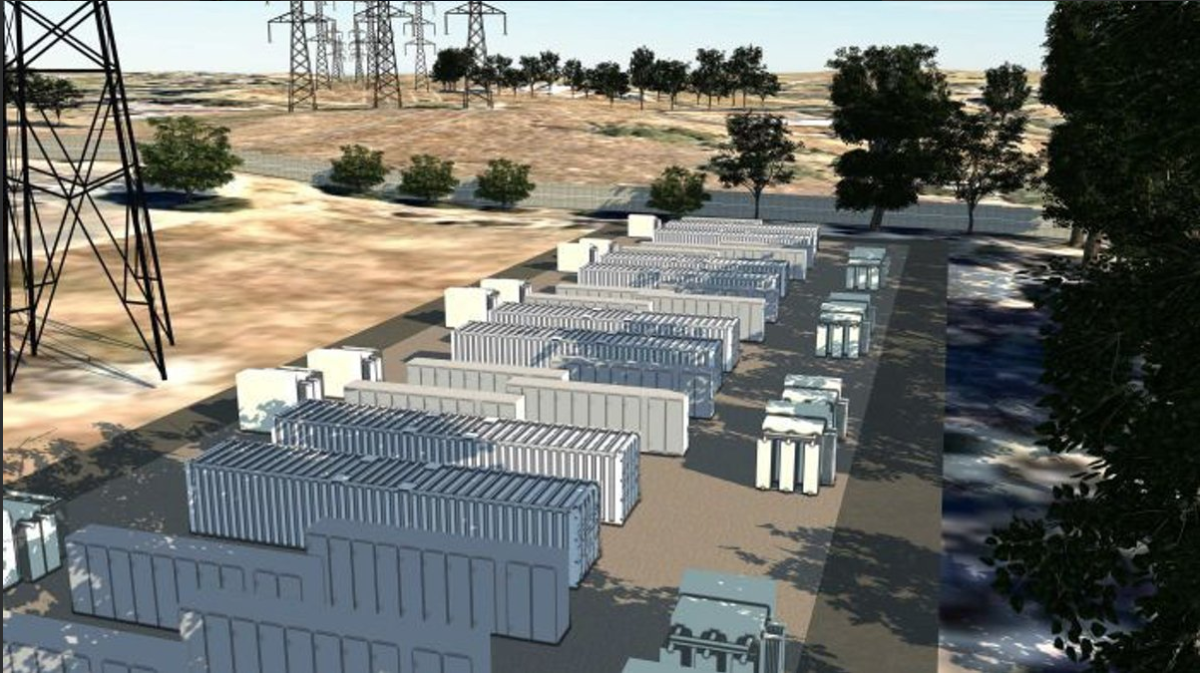With high grid costs, a highly competitive of pipeline of solar and wind generation coming online, and retiring conventional generation, Australia is shaping to be a key electricity network laboratory writ large. U.S.-based large-scale storage integrator Fluence believes these ingredients are attracting storage investment as it prepares to deliver a 30 MW/30 MWh grid connected battery in Victoria.
Last week it was announced that Fluence would supply a battery system to a consortium of Spotless, AusNet Services, and EnergyAustralia – under a contract signed with the Victorian State Government. The battery will be installed at the Ballarat Terminal Station operated by AusNet.
The system is designed to meet peak electricity demand, along with providing frequency regulation services. It is sized to meet peak demand from the equivalent of 200,000 homes for one hour.
“What I find really great about what is happening in South Australia, it is happening in Victoria, and we believe it is going to happen in Queensland, is that the states are ready to press go and then learn and iterate,” Fluence’s VP Market Application Praven Kathpal told pv magazine Australia. “That is super important because you have to learn by doing. There is no perfect market design, no perfect policy or regulation, and so to get projects in the ground, and iterate and learn – and not overreact when things don’t go exactly as planned – is really important.”

Image: Fluence
Fluence is the result of a joint venture between U.S. utility AES and global power giant Siemens. It was launched in mid-2017.
Alongside the Ballarat project, Fluence is also partnering with the Lyon Group on the developer’s Australian utility-scale solar+storage plans.
Fluence’s Kathpal says that a strong business-case for large-scale storage has emerged particularly “on the network side”, where it is competitive with grid expansion programs.
“Honestly, the learning that has been happening until now has not been heavily subsidized,” said Kathpal. “The alternative is making large commitments to new generation or grid investments that are not optimal once you consider the introduction of storage.
“We’re coming from a position that storage is more than niche,” he continued. “Storage will become an elemental and essential component to grid planning across generation, transmission and distribution.”
For large-scale solar+storage applications, Fluence’s Siemens and AES engineers have designed a DC-to-DC storage architecture called SunFlex. By scattering storage units throughout a PV power plant and coupling on the DC bus, Fluence claims that the cost of storing the solar power can be halved.
The SunFlex solution, if it delivers on storage efficiency as promised, could dramatically improve the business case for large-scale storage to be deployed as an integrated solution within PV power plants.
Kathpal say that while ‘energy only’ markets are making things difficult for such investments, as renewable penetration increases the flexibility that storage delivers will become increasingly vital. He comments: “the more creative and entrepreneurial, forward thinking developers out there are finding a way to get it done.”
Construction has begun on the Ballarat 30 MW/30 MWh battery, with completion slated for November. ARENA is providing $25 million towards the project.
This content is protected by copyright and may not be reused. If you want to cooperate with us and would like to reuse some of our content, please contact: editors@pv-magazine.com.









By submitting this form you agree to pv magazine using your data for the purposes of publishing your comment.
Your personal data will only be disclosed or otherwise transmitted to third parties for the purposes of spam filtering or if this is necessary for technical maintenance of the website. Any other transfer to third parties will not take place unless this is justified on the basis of applicable data protection regulations or if pv magazine is legally obliged to do so.
You may revoke this consent at any time with effect for the future, in which case your personal data will be deleted immediately. Otherwise, your data will be deleted if pv magazine has processed your request or the purpose of data storage is fulfilled.
Further information on data privacy can be found in our Data Protection Policy.